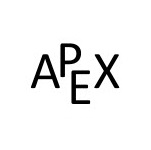1.1.1: Exercises 1.1
- Page ID
- 62178
Terms and Concepts
Exercise \(\PageIndex{1}\)
In your own words, what does “multiplication and division are on the same level” mean?
- Answer
-
Answers will vary.
Exercise \(\PageIndex{2}\)
In an expression with both addition and multiplication, which operation do you complete first?
- Answer
-
Multiplication
Exercise \(\PageIndex{3}\)
In your own words, what is meant by “implied parentheses”? Provide an example.
- Answer
-
Answers will vary.
Exercise \(\PageIndex{4}\)
T/F: In an expression with only addition and subtraction remaining, you must complete all of the addition before starting the subtraction. Explain.
- Answer
-
F; you should complete them from left to right
Exercise \(\PageIndex{5}\)
T/F: In the expression \(−2^{2}\), only “2” is squared, not “−2.” Explain.
- Answer
-
T; there are no parentheses, so you first square $2$ and then make the answer negative.
Problems
In exercises \(\PageIndex{6}\)-\(\PageIndex{15}\), simplify the given expressions.
Exercise \(\PageIndex{6}\)
\(\displaystyle -2(11-5) \div 3 + 2^3\)
- Answer
-
\(4\)
Exercise \(\PageIndex{7}\)
\(\frac{3}{5}+\frac{2}{3}\div\frac{5}{6}\)
- Answer
-
\(\frac{7}{5}\)
Exercise \(\PageIndex{8}\)
\(\left(\frac{2}{3}\right)^{2}-\frac{1}{6}\)
- Answer
-
\(\frac{5}{18}\)
Exercise \(\PageIndex{9}\)
\(\displaystyle (13+7) \div 4 -3^2\)
- Answer
-
\(-4\)
Exercise \(\PageIndex{10}\)
\(\left(5-\frac{1}{2}\right)^{3}\)
- Answer
-
\(\frac{729}{8}\)
Exercise \(\PageIndex{11}\)
\((2)(-2)\div\frac{1}{2}\)
- Answer
-
\(-8\)
Exercise \(\PageIndex{12}\)
\(\displaystyle \frac{2-4(3-5)}{6-7+3} -\sqrt{25-9}\)
- Answer
-
\(1\)
Exercise \(\PageIndex{13}\)
\(\displaystyle \sqrt{\frac{2^2+3^2+5}{2-(-1)^3} -2}+6\)
- Answer
-
\(8\)
Exercise \(\PageIndex{14}\)
\(\displaystyle \frac{4-1(-2)}{\frac{1}{2}+1}-2\)
- Answer
-
\(2\)
Exercise \(\PageIndex{15}\)
\(-4^{2}+5^{2}-2\times 3+1\)
- Answer
-
\(4\)
In exercises \(\PageIndex{16}\) – \(\PageIndex{21}\), evaluate the described mathematical statement, or determine how the described changes affect other variables in the statement as appropriate.
Exercise \(\PageIndex{16}\)
A runner leaves her home and runs straight for 30 minutes at a pace of 1 mi every 10 minutes (a 10-minute mile). She makes a 90-degree left turn and then runs straight for 40 minutes at the same pace. What is the distance between her current location and her home?
- Answer
-
5 miles
Exercise \(\PageIndex{17}\)
The Reynold’s number, which helps identify whether or not a fluid flow is turbulent, is given by \(Re=\frac{\rho uD}{\mu}\). If \(\rho\), \(u\), and \(D\) are held constant while \(\mu\) increases, does \(Re\) increase, decrease, or stay the same?
- Answer
-
\(Re\) decreases.
Exercise \(\PageIndex{18}\)
Consider a square-based box whose height is twice the length of the base of the side. If the length of the square base is 3 ft, what is the volume of the box? (Don’t forget your units!)
- Answer
-
54 ft\(^3\)
Exercise \(\PageIndex{19}\)
The velocity of periodic waves, \(v\), is given by \(v=\lambda f\) where \(\lambda\) is the length of the waves and \(f\) is the frequency of the waves. If the wavelength is held constant while the frequency is tripled, what happens to the velocity of the waves? Be as descriptive as possible.
- Answer
-
The velocity is tripled.
Exercise \(\PageIndex{20}\)
The capacitance, \(C\), of a parallel plate capacitor is given by \(C=\frac{k \epsilon_0 A}{d}\) where \(d\) is the distance between the plates. If \(k\), \(\epsilon_0\), and \(A\) are held constant while the distance between the plates decreases, does the capacitance increase, decrease, or stay the same?
- Answer
-
The capacitance increases.
Exercise \(\PageIndex{21}\)
Consider a square-based box whose height is half the length of the sides for the base. If the surface area of the base is 16 ft\(^2\), what is the volume of the box?
- Answer
-
32 ft\(^3\)
In exercises \(\PageIndex{22}\) – \(\PageIndex{25}\), evaluate the given work for correctness. Is the final answer correct? If not, describe the error(s) in the solution.
Exercise \(\PageIndex{22}\)
\[\begin{split} 12 \div 6 \times 4 - (3-4)^2 &= 12 \div 6 \times 4 - (-1)^2 \\ &= 12 \div 6 \times 4 +1 \\ &= 12 \div 24 + 1 \\ &= \frac{1}{2} + 1 \\ &= \frac{3}{2} \end{split}\]
- Answer
-
The final answer is not correct. There are two errors: in the second step, \(-(-1)^2\) should give \(-1\), not \(+1\); in the third step, the division should have been done before the multiplication.
Exercise \(\PageIndex{23}\)
\[\begin{split} -3^2 + 6 \div 2 + (-4)^2 & = -9 + 6 \div 2 + (-4)^2 \\ & = -9 + 6 \div 2 + 16 \\ & = -9 + 3 + 16 \\ & = 10 \end{split}\]
- Answer
-
The final answer is correct.
Exercise \(\PageIndex{24}\)
\[\begin{split} \frac{2+(3-5)}{2-2(6+3)} + \sqrt{64+36} & = \frac{2+(-2)}{2-2(6+3)} + \sqrt{64+36} \\ & = \frac{2-2}{2-2(9)} + \sqrt{64+36} \\ & = \frac{2-2}{2-2(9)} + 8+6 \\ & = \frac{2-2}{2-18} +8 + 6 \\ & = \frac{0}{-16} + 14 \\ & = 14 \end{split}\]
- Answer
-
The final answer is not correct. In the square root, 64 and 36 should be added before the square root is taken.
Exercise \(\PageIndex{25}\)
\[\begin{split} \frac{(-3+1)(2(-3))-((-3)^2-3)(1)}{(-3+1)^2} & = \frac{(-3+1)(2(-3)) - ((-3)^2-3)(1)}{(-2)^2} \\ & = \frac{(-2)(-6)-((-3)^2-3)(1)}{(-2)^2} \\ & = \frac{(-2)(-6) -(9-3)(1)}{(-2)^2} \\ & = \frac{(-2)(-6) -(6)(1)}{4} \\ & = \frac{-12-6}{4} \\ & = \frac{-18}{4} \\ & = \frac{-9}{2} \end{split}\]
- Answer
-
The final answer is not correct. In the fifth step, \((-2)(-6)\) should be \(12\), not \(-12\).


